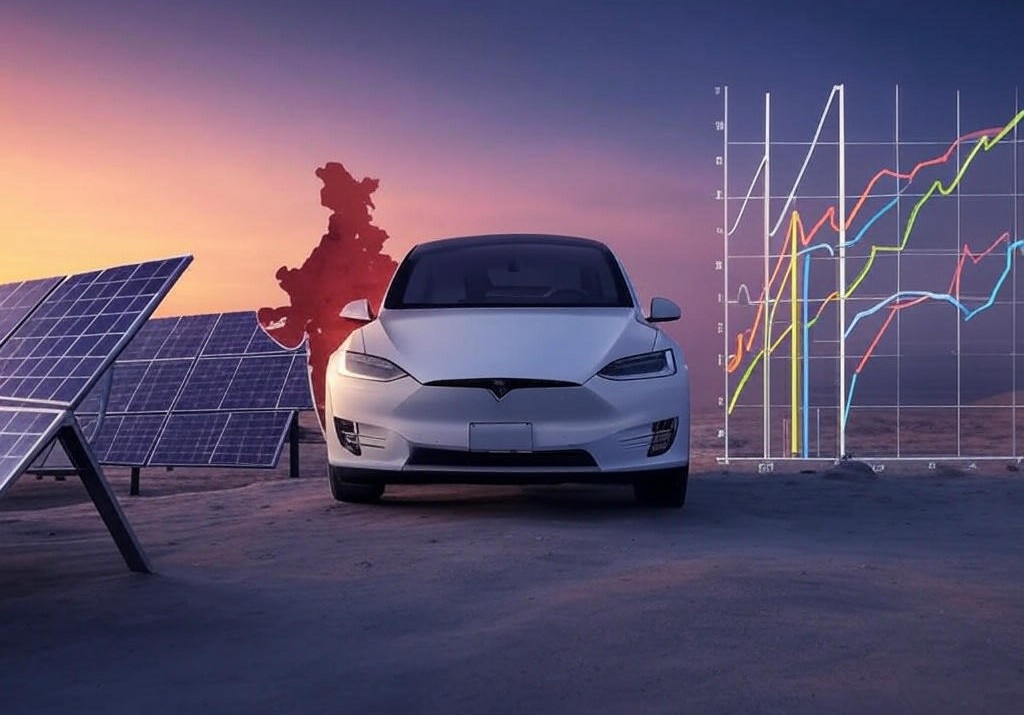Regional Economic Developments in Asia is a region of rapid economic growth but it also faces significant challenges due to trade policies, tariffs and market barriers. Countries like India Cambodia, Vietnam and Sri Lanka are navigating complex economic landscapes shaped by high import tariffs export restrictions and domestic reforms.

India’s High Import Tariffs and Tesla’s Hesitation
India is one of the worlds fastest growing economies with a massive market for consumer goods and technology. Its high import tariffs are creating barriers for global companies like Tesla the electric vehicle (EV) giant. India imposes a 100% tariff on imported cars which means a vehicle worth $40000 would cost $80000 after taxes. This makes it difficult for Tesla to sell its cars at competitive prices in India.
Tesla has been in talks with the Indian government to set up a manufacturing plant which could lower costs by producing cars locally. However the high tariffs remain a sticking point. Tesla’s CEO Elon Musk has repeatedly said that these tariffs make it hard for the company to enter the Indian market. For India attracting companies like Tesla is crucial for boosting its EV industry, creating jobs and reducing pollution. The government has introduced policies like the Production Linked Incentive (PLI) scheme to encourage local manufacturing but progress is slow.
On the other hand high tariffs protect India’s domestic automakers such as Tata and Mahindra from foreign competition. While this helps local companies it limits consumer choice and slows the adoption of advanced technologies like EVs. The Indian government faces a tough balancing act protecting local industries while opening the market to global players. If Tesla and India can reach an agreement it could transform the countrys EV market and support its goal of 30% EV sales by 2030.
Cambodia and Vietnam’s Solar Export Challenges
Cambodia and Vietnam have emerged as key players in the global solar panel industry thanks to low labor costs and growing manufacturing capabilities. However both countries are now facing steep tariffs from the United States which is impacting their solar exports. The U.S. has imposed tariffs as high as 3521% on Cambodian solar panels and 813% on Vietnamese ones accusing these countries of “dumping” products at unfairly low prices.
These tariffs stem from U.S. concerns about competition with its domestic solar industry and allegations that Chinese companies are using Cambodia and Vietnam to bypass U.S. trade restrictions. For Cambodia the solar industry is a vital source of export revenue employing thousands of workers. The high tariffs threaten jobs and could slow the countrys economic growth. Vietnam a larger player in solar manufacturing faces similar challenges. Its solar exports to the U.S. have dropped significantly forcing companies to rethink their strategies.
Both countries are now looking for new markets such as Europe and Southeast Asia to offset the loss of U.S. demand. They are also investing in technology to make their solar panels more competitive. However finding new buyers and upgrading facilities will take time. For now the tariffs are a major hurdle and Cambodia and Vietnam must navigate this trade dispute carefully to protect their solar industries.
Sri Lanka’s Economic Recovery and Growth Outlook
Sri Lanka has faced significant economic challenges in recent years including a severe financial crisis in 2022 that led to shortages of food, fuel and medicine. However the country is showing signs of recovery. According to economic forecasts Sri Lanka’s economy is expected to grow by 3.5% in 2025 a positive sign for a nation still rebuilding.
This growth is driven by several factors. First Sri Lanka has implemented reforms under an International Monetary Fund (IMF) bailout program which has helped stabilize its finances. Second the tourism sector a major contributor to the economy is rebounding as more visitors return to the countrys beaches and cultural sites. Third the government is focusing on export oriented industries like tea, garments and IT services to boost revenue.
Despite this progress Sri Lanka faces challenges from global trade policies. High tariffs in key markets like the U.S. and Europe make it harder for Sri Lankan exporters to compete. For example garments one of Sri Lanka’s top exports face tariffs that increase costs for buyers. To address this the government is negotiating free trade agreements (FTAs) with countries like India and China to open new markets.
Sri Lanka’s recovery also depends on managing its debt and controlling inflation. The government must continue reforms to maintain investor confidence and ensure longterm growth. While the 3.5% growth forecast is encouraging it will require sustained effort to overcome tariff challenges and build a stronger economy.
The Bigger Picture: Trade and Growth in Asia
The developments in India, Cambodia, Vietnam and Sri Lanka highlight the complex interplay between trade policies and economic growth. High tariffs whether imposed by Asian countries or their trading partners can protect local industries but also limit market access and innovation. For India lowering tariffs could attract companies like Tesla but risks hurting domestic automakers. For Cambodia and Vietnam U.S. tariffs threaten their solar industries forcing them to find new markets. For Sri Lanka global tariffs add pressure to an economy still recovering from crisis.
These challenges also present opportunities. India could become a hub for EV manufacturing if it strikes the right balance with foreign companies. Cambodia and Vietnam can diversify their solar exports and invest in technology to stay competitive. Sri Lanka’s reforms and focus on exports could pave the way for sustained growth.
In conclusion Asia’s economic landscape is shaped by trade barriers, market dynamics and domestic policies. Countries must navigate these challenges carefully to achieve their growth potential. For businesses and consumers these developments will influence everything from car prices to solar panel availability. As the region moves toward 2025 the ability to adapt to global trade policies will be key to success.
